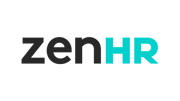
Your Guide to Choosing the Right HR Software in 2025
Finding the right HR software can feel overwhelming, especially when there are so many options on the market. Whether you're running a small business or a large enterprise, having the right tools in place can make all the difference in how smoothly your HR operations run.
We put together this guide to break it all down for you: what HR software is, the different types available, must-have features, and how to choose the best fit for your company. Let’s get started.
What is HR Software?
HR software is basically your HR team’s best friend. It’s a digital solution designed to simplify and automate everything related to managing people in an organization. From hiring new talent and keeping track of employee records to handling payroll, performance reviews, and compliance, it’s all about making HR processes more efficient and less of a headache. The right software helps businesses save time, reduce manual work, and make data-driven decisions to support their workforce.
🛠️Key Functions of HR Software:
- Employee Information Management: Centralizes employee data and records.
- Payroll Processing: Automates salary calculations, tax deductions, and payments.
- Recruitment & Applicant Tracking: Helps with sourcing, screening, and hiring candidates.
- Performance Management: Enables goal setting, appraisals, and feedback.
- Benefits Administration: Manages employee benefits and compensation.
- Compliance & Reporting: Ensures adherence to labor laws and generates reports.
- Employee Self-Service: Allows employees to access HR-related information and updates.
Types of HR Software 💻
There are different types of HR software, each serving specific HR functions. Understanding these types can help businesses select the right solution for their needs.
1. HRIS (Human Resource Information System)
A comprehensive system for managing employee data, payroll, benefits, and compliance.
2. HRMS (Human Resource Management System)
Includes all HRIS functionalities but adds more advanced features like performance tracking and employee engagement tools.
3. ATS (Applicant Tracking System)
Software focused on recruitment and hiring processes, helping HR teams streamline candidate sourcing, screening, and selection.
4. Payroll Software
Specialized software for automating payroll processing, tax compliance, and benefits administration.
5. Employee Engagement & Performance Software
Designed to track employee productivity, facilitate performance appraisals, and improve engagement through feedback mechanisms.
Key Features to Look for in HR Software 🔍
When selecting HR software, businesses should consider features that align with their operational needs and growth plans.
1. Scalability
Ensure the software can grow with your business by accommodating more employees and features as needed.
2. Automation & AI Capabilities
Automation reduces manual tasks and errors, while AI enhances recruitment, analytics, and personalized employee experiences.
3. User-Friendly Interface
An intuitive design ensures ease of use for HR teams and employees alike.
4. Integration with Other Systems
Look for software that seamlessly integrates with payroll, accounting, and productivity tools.
5. Security & Compliance
Data security and compliance with labor laws are essential to protect sensitive employee information.
6. Customization & Reporting
The ability to tailor workflows and generate detailed reports can improve HR decision-making.
Cloud-Based vs. On-Premise HR Software: Pros & Cons
Businesses must choose between cloud-based and on-premise HR software based on their IT infrastructure, budget, and security requirements.
Cloud-Based HR Software
✅ Access from anywhere
✅ Lower upfront costs
✅ Automatic updates & backups
❌ Requires internet connectivity
❌ Subscription-based pricing
On-Premise HR Software
✅ Full control over data security
✅ One-time licensing fee
✅ Customizable to specific needs
❌ Higher upfront costs
❌ Requires in-house IT management
📋Checklist: How to Evaluate HR Software Vendors
Before selecting an HR software vendor, consider the following checklist:
✅Does it meet my business requirements?
✅What is the total cost (upfront and ongoing)?
✅Is customer support responsive and reliable?
✅What security measures are in place?
✅Does it integrate with your existing systems?
✅Is the software easy to implement and use?
Best HR Software for SMEs vs. Enterprises
The needs of small businesses differ from those of large enterprises, requiring different HR software solutions.
For SMEs:
- Key Focus: Cost-effectiveness, ease of use, automation.
- Recommended Features: Payroll, basic ATS, employee self-service.
For Enterprises:
- Key Focus: Scalability, customization, compliance.
- Recommended Features: Advanced analytics, performance tracking, and multi-location support.
Top Questions to Ask Before Purchasing HR Software
- What HR challenges does this software solve?
- How long does implementation take?
- What training and support are provided?
- Can it integrate with our existing systems?
- What are the long-term costs?
- Does it support regulatory compliance in our region?
- Is it customizable to our unique needs?
✨ZenHR vs. Other HR Software: What Sets Us Apart?✨
ZenHR is a leading HR software tailored for businesses in the MENA region, offering:
- Localized Compliance: Ensures adherence to regional labor laws.
- AI-Powered Recruitment: Smart hiring features to enhance talent acquisition.
- End-to-End HR Solutions: Covers everything from onboarding to offboarding.
- User-Friendly Interface: Intuitive design for both HR teams and employees.
- Seamless Integrations: Works with popular payroll and accounting systems.
- Dedicated Customer Support: Personalized assistance for smooth implementation and usage.
- Read more about ZenHR’s modules & features here.
HR Software Implementation Best Practices
Once you've selected your HR software, following these best practices can ensure a successful implementation:
1. Define Clear Objectives
Set clear goals for what you want to achieve with the software.
2. Involve Key Stakeholders
Engage HR, IT, and finance teams in the decision-making and implementation process.
3. Provide Adequate Training
Ensure all users understand how to navigate and utilize the software effectively.
4. Start with a Pilot Run
Test the software with a small group before full deployment.
5. Monitor and Optimize
Regularly review the software’s performance and gather feedback for improvements.
Wrapping Up
Picking the right HR software is a game-changer for your business. It affects how smoothly your team operates and how engaged your employees feel. By knowing the different types of HR software, key features, and what to look for, you can find the perfect fit for your company’s needs.
ZenHR makes HR management easy with an all-in-one platform designed for businesses of all sizes. Whether you’re running a startup or a growing enterprise, having the right tools in place helps you stay efficient, compliant, and ready for the future. Investing in the right HR software today means a more streamlined and productive workforce tomorrow.

Amanee Hasan
Amanee Hasan is a Senior Content Writer at ZenHR, an award-winning and top-rated HR solution that offers world-class HR software services in the MENA region. Her main focuses are SEO, UX writing, copywriting, and creating content highlighting the latest HR trends, and gives organizations and individuals the tools they need to create successful work environments where people thrive.




